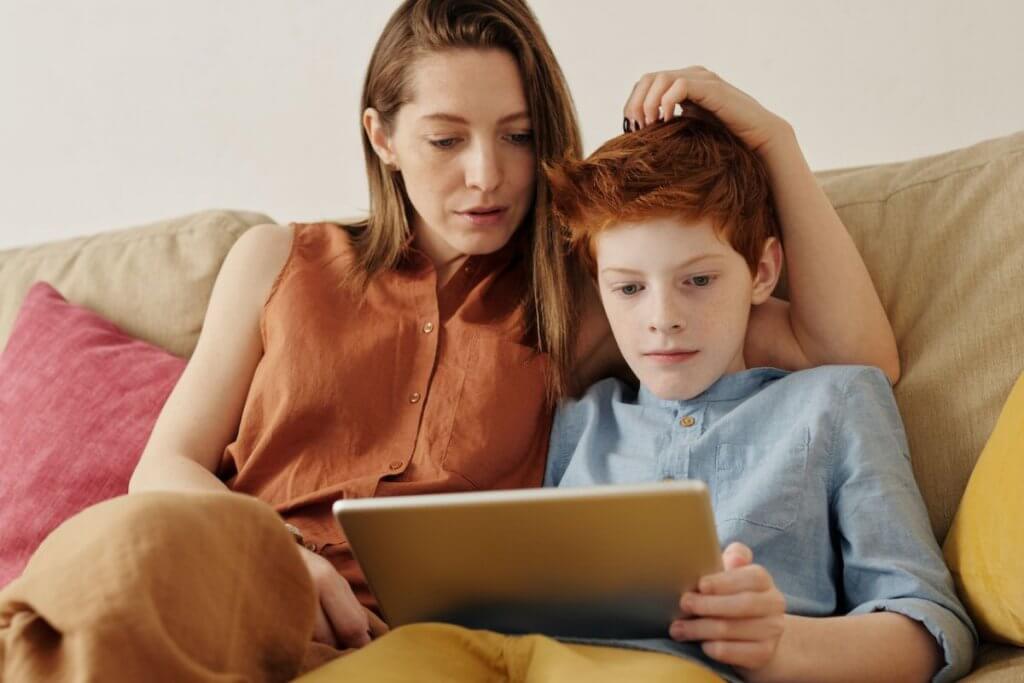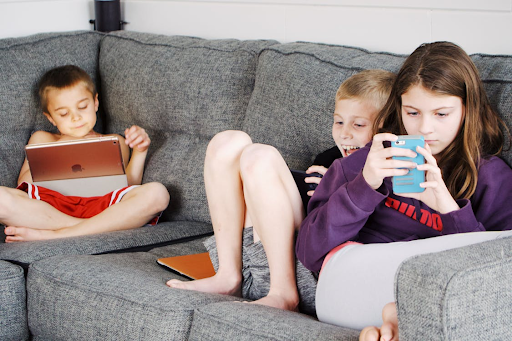In this day and age, it is very important to control children’s exposure to screens. Some issues that could arise from excessive screen time include physical, mental, and social problems. Fortunately, it is possible for parents to promote healthier habits through effective screen time tips, thereby allowing the use of screens for healthy purposes alone. It is not only about cutting down on screen time, but in fact, it is about placing the growing children in a better surrounding. Now, let us discuss ten wonderful tactics that can help change your child’s screen habits.
Understanding the Impact of Excessive Screen Time
Physical Health Effects
Excessive exposure to screens can affect the physical health of your child. Long periods without being active may cause eye strain, poor posture, and even weight gain. Additionally, blue light from screen emissions can disrupt sleeping patterns in children, hence interfering with their ability to achieve the quality sleep necessary for growth and development.
Mental Health Effects
The psychological effect of too much screen time is equally alarming. Excessive screen time causes anxiety, depression, and attention disorders. Children tend to become more irritable and less able to focus on tasks without the constant stimulation of screens. This disrupts emotional well-being and prevents them from developing healthy coping mechanisms for stress.
Academic and Social Consequences
From an academic standpoint, excessive use of screens could be detrimental to the child’s school performance. It may cause them to develop a shorter attention span, making it hard to focus in class. In a social sense, it can pose a challenge since very little face-to-face communication would exist, an important aspect in the development of social communication and empathy. In children, over-reliance on a screen can also translate to difficulties in bonding with others and participating in group work.
Why Should We Manage Screen Time?
Limitations on the use of screens among children are essential for their healthy growth and development. First of all, it reduces the chances of developing physical conditions such as the risk of eye strain, bad posture, or even having problems with sleep. Secondly, mental health is maintained because the chances of anxiety, depression, and even attention disorders are minimized. Thirdly, it improves studies as it improves attention spans. Finally, it promotes sociability by helping children grow up building friendships and communicating effectively.
10 Tips To Reduce Screen Time For Kids
1. Screen time as routine
Kids understand routine infinitely better than we give them credit for. In fact, routine helps them feel safe and is crucial for building good habits right from childhood!
One way to help manage children’s screen habits is by making screen time a regular part of their lives. This can start by setting specific points throughout the day where this is allowed, such as after homework or chores, for example. This gives the child a defined structure but also implies that time spent at screens is a privilege. Consistency is the key—repetition for developing healthy habits and predictability with the use of screens.
2. Avoid screens during meal times

Make the times spent at the dining table a no-screen zone where bonding with family and conscious eating can occur. This is such an easy rule, yet you will likely find that this cuts the amount of time spent in front of screens down significantly for your child. You can utilize these times by engaging your child in meaningful conversations, sharing your stories, or teaching them proper table manners to help keep them focused on what they’re eating and how to consume it in the healthiest ways for proper digestion. Reinforce this habit by being a role model and keeping your own devices away during meals. Evidence supports that screen time at meals leads to childhood obesity and other adverse health effects. Thus, it is a crucial screen time recommendation to keep meal times as family time.
3. Teach balance through examples
Children learn by observing their parents’ behavior. Demonstrate balanced screen use by setting limits on your own screen time and engaging in non-digital activities. Show them the value of reading, outdoor play, and hobbies. When they see you prioritizing these activities over screens, they’ll understand the importance of balance. Be vocal about your choices, explaining why it’s important to limit screen time and how it benefits your well-being.
4. Put the screens away during family outings
It is important to weave in a lot of activities and hobbies in our children’s lives to nurture a love for nature and the outdoors, to inculcate habits of going out, playing and enjoying things outside of the home and screens.

Family outings should be avenues for making memories and getting closer to each other. As a rule, make it a point to ban the usage of all screens during family outings. Make your children as fully active as possible in whatever experience you share with them: hike, zoo visit, or even a simple picnic in a park. With the absence of screens, you enable people to be present, so they are connected on deeper levels and interact meaningfully. Leave your phone or turn off your phone as an example.
5. Monitor screen time content
Screen safety is of utmost importance. As much as we try, the wrong kind of content and interactions, especially on online channels, is a real possibility.

It is just as crucial to be aware of what your child is consuming on screens as it is the amount of time they spend on them. Always check the apps, games, and shows they consume for suitability to their age and educational content. Utilize reviews and ratings for this purpose. Don’t hesitate to discuss any inappropriate content with your child to help them understand why certain materials are off-limits. Your vigilance will guide them towards healthier screen habits.
6. Choose pertinent screen time options
Not all screen time is created equal. Ensure that your child is engaging with educational and interactive content that encourages learning and creativity. Select apps and programs that challenge their minds, teach them something new, or increase their knowledge in specific areas. Find those programs that fit your child’s interests to make screen time much more meaningful. You are transforming screen time for your child when you make it beneficial through such activities.
But when allowing independent screen time, it’s better to choose offline or tried and tested modes and channels. For example, educational games like the ones that PlayShifu offers–Orboot globes, or STEM-based Plugo game sets, etc. Or maybe a spot of gaming with non-violent and inoffensive games you’ve played together on your Nintendos previously, etc. Similarly, choose devices accordingly, as well. Too many handheld devices with free access lead to problems. In this regard, big screens, limited app access over small screens, and unrestricted app hopping is our screen time recommendation.
7. Utilize parental controls
Parental controls are a godsend for responsible screen use. One can set limits on the time, block inappropriate content, and track the online activities of a child through these features. Most devices and applications have parental controls inbuilt, and they are user-friendly and customizable to your family’s needs. Through these controls, you create a safer, more balanced digital environment while allowing them to be given only what is suitable for their age while at the same time leading them into healthier screen behaviors.
8. Have screen time conversations
Open and honest conversations about screen time can make a significant difference. Discuss the reasons for restricting and the benefits of using screens in moderation with the child. Explain how excessive screen time affects their health, academics, and life socially. Let them air out their feelings and concerns to you and be willing to hear them out. This will enable them to understand why moderation is important and will also provide an interactive approach to their screen time management, which might make them adhere to the guidelines.
9. Productive and active screen time
Focus on productive screen time over mindless content. What we mean here is to focus on games, videos, websites, and apps that are interactive, educational and add value to the time spent on screen, as opposed to, content that kids use to tune out of their surroundings.

Maximize the benefits of screen time by integrating productive and active options into your child’s routine. Choose content that encourages physical activity, such as interactive fitness apps or dance videos. Educational programs that stimulate critical thinking can be made into games, creating something more engaging than simple passive screen time. This means that by pushing your child into such activities, you ensure that time spent with screens will not only be fun but also develop your child’s well-being.
10. Be flexible but firm
Balancing flexibility with firmness is key to managing screen time effectively. While it’s important to set clear boundaries and limits, occasional exceptions can be made for special circumstances, like family movie nights or educational projects. Communicate the reasons for these exceptions clearly to avoid confusion. Consistency in enforcing rules is crucial, but a flexible approach shows empathy and understanding, making it easier for your child to accept and adhere to screen time guidelines.
Conclusion
All of these ten fabulous tips are sure to make a huge difference in your child’s screen use. Whether it is making meal time screen-free or monitoring what they view and having an open conversation with them about it, each step leads to better health in their screen use. Consistency is great, but flexibility and empathy also play crucial roles. So, commit, stay the course, and your efforts will lead the way for a balanced, enriching, and healthy screen life for your child. You’ve got this!
FAQs
1. Why is it important to reduce screen time for kids?
Reducing screen time for kids is crucial for their physical, mental, and social well-being. It helps prevent issues like eye strain, poor posture, and sleep disruption while fostering better academic performance and social skills.
2. What are the recommended screen time limits for different ages?
For ages 2-5, limit screen time to one hour per day of high-quality programming. For older kids, ensure screen time doesn’t interfere with sleep, physical activity, and other healthy behaviors.
3. How can I encourage my child to engage in non-screen activities?
Encourage non-screen activities by offering engaging alternatives like outdoor play, arts and crafts, or reading. Create a variety of options to spark their interest.
4. What are some effective strategies for setting screen time limits?
Set screen time limits by establishing clear rules and using tools like parental controls. Be consistent yet flexible to maintain balance.
5. How can I manage resistance from my child regarding screen time limits?
To manage resistance, involve your child in setting screen time rules and explain the benefits. Show empathy and be firm but understanding in your approach.
6. What are some healthy screen habits that parents can model for their children?
Model healthy screen habits by limiting your own screen use, prioritizing non-digital activities, and demonstrating the value of balance in daily life.




